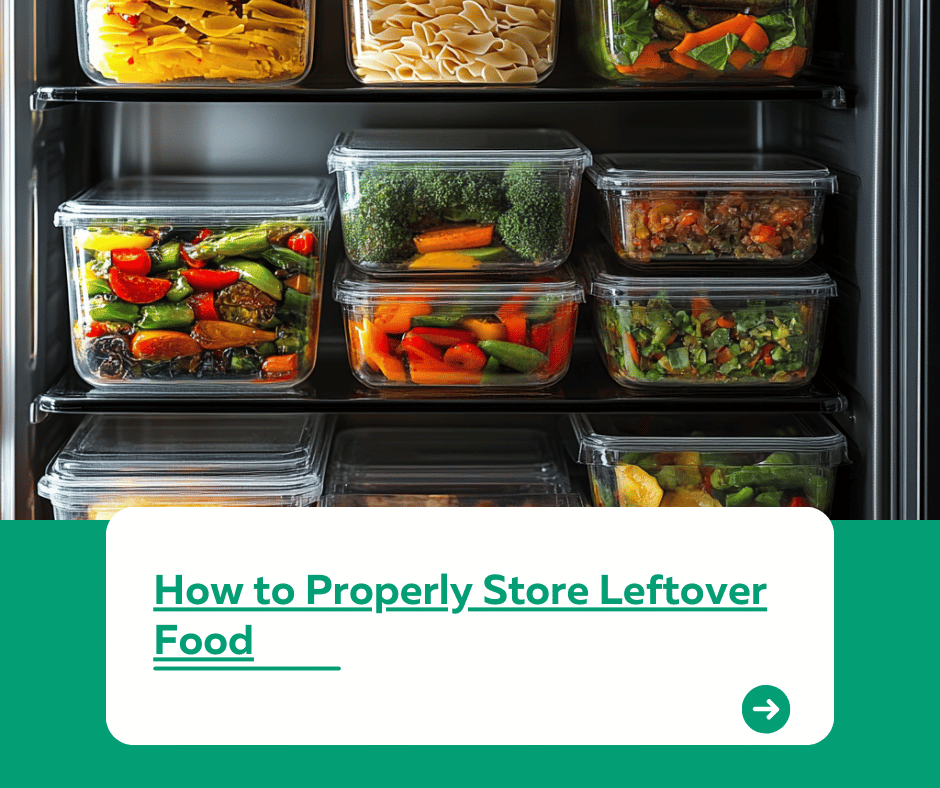
Introduction
Leftovers can save time and reduce waste, but improper storage can lead to food spoilage or safety concerns. How do you store leftover food properly to keep it fresh and safe to eat? This guide covers the best practices for storing leftovers, including the right containers, techniques, and tips to maximize freshness.
1. Cool Leftovers Quickly
- Why It Matters: Allowing food to sit at room temperature for too long can lead to bacterial growth.
- What to Do:
- Refrigerate leftovers within 2 hours of cooking.
- For hot dishes, cool them faster by dividing them into smaller portions.
2. Choose the Right Storage Containers
Proper containers can make all the difference:
- Airtight Containers: Keep air out to maintain freshness and prevent odors from mixing.
- Glass or BPA-Free Plastic: Ideal for storing food safely without leaching harmful chemicals.
- Label Containers: Write the date to track freshness and avoid eating spoiled food.
3. Store at the Right Temperature
- Refrigeration: Store perishable leftovers at 40°F (4°C) or below.
- Freezing: For long-term storage, freeze leftovers at 0°F (-18°C).
- Avoid the Danger Zone: Bacteria thrive between 40°F and 140°F (4°C to 60°C).
4. Keep Similar Foods Together
- Organize Your Fridge: Store similar items in the same area to reduce cross-contamination.
- Separate Raw and Cooked Foods: Always store raw meats below cooked leftovers to prevent drips and contamination.
5. Reheat Leftovers Safely
- Temperature Check: Reheat leftovers to an internal temperature of 165°F (74°C) to kill bacteria.
- Microwave Tips: Stir and rotate food to ensure even heating.
- Avoid Reheating Multiple Times: Reheat only the portion you plan to eat.
6. Know When to Discard Leftovers
- Fridge Storage Times: Most leftovers are safe for 3–4 days in the fridge.
- Freezer Storage Times: Leftovers can last up to 3 months in the freezer.
- Smell and Texture Test: If food smells off or has a strange texture, it’s best to throw it out.
7. Smart Tips for Storing Leftovers
- Use Vacuum Sealers: Extend the freshness of leftovers by removing excess air.
- Freeze in Portions: Store individual servings to make reheating quicker and easier.
- Keep a Leftovers Shelf: Designate a specific shelf in your fridge for leftovers to avoid forgetting them.
Conclusion
Storing leftovers properly ensures they remain safe, fresh, and ready to enjoy. With the right tools and techniques, you can reduce waste and make the most of your meals. For more kitchen tips and food storage hacks, visit our kuestion.com.